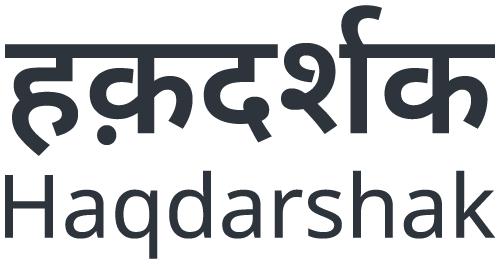PM Kisan Samman Nidhi Scheme Analysis

By the Central Program Design Team at Haqdarshak
01/ Introduction
Prehlad Sahu, a farmer from Raipur, Chhattisgarh, with 2.5 acres of land, eagerly enrolled in the Pradhan Mantri Kisan Samman Nidhi (PM-Kisan) scheme initiated in 2019. With the additional financial aid provided under the scheme, he could buy agricultural farm inputs such as seeds, medicines, and fertilisers, and also support his family of five. However, despite submitting all the necessary documents, the scheme instalments never reached his account.
An issue common to several other landholding farmers across India. In fact, of the 14.6 crore operational landholding farmers1, 32.2% of them are missing out on PM-Kisan scheme benefits.
Sahu made several attempts to seek assistance from the relevant authorities, but despite their reassurances, the payments continued to elude him. Suspecting his Kisan Credit Card (KCC) loan to be the cause for the delay, he met an agricultural officer who advised him to resubmit his eligibility documents. Which he did. Nothing happened.
As his ordeal continued to persist in 2021, Sahu sought outside help despite the monetary cost involved. He approached several officials and a few local Common Service Centers (CSCs) but all his efforts were in vain and cost him nearly INR 4,000 in the process.
Sometime later, he came across a ‘Haqdarshak’ agent working in his gram panchayat who reassured him that such scheme-related issues were common, that several other beneficiaries were going through the same thing, and that she could help him identify and resolve the issue. The agent discovered a bank account error to be the root cause. Once the issue was resolved, Sahu received his overdue payment of INR 16,000.
Unlike Sahu, Chandra Bai, a 65-year-old farmer from UP with 1.3 acres of land, did receive her initial instalments from the PM-Kisan scheme. The financial aid helped support her livelihood, primarily dependent on agriculture, and her eldest son, a migrant labourer. However, after a few instalments, the money stopped coming in.
Worried, she diligently visited several officials, but her case remained unresolved. She even resubmitted eligibility documents, as advised by the district office, but saw no positive results. At last, Chandra Bai sought help from a ‘Haqdarshak’ agent, who uncovered the problem — her Aadhaar was unverified. The agent helped link Chandra Bai’s Aadhaar to her bank account and complete her KYC verification. Within weeks, Chandra Bai received the overdue payment of INR 10,000.
02/ Scheme Overview
The PM-Kisan scheme is a pivotal central sector scheme aimed at extending fundamental income support to farmers. Initially targeted at small and marginal farmers with combined landholdings of upto 2 hectares, the scheme’s scope has since expanded to encompass all farmer families, barring those who are capable of filing income tax returns. This scheme transfers INR 6,000 annually to farmers’ bank accounts in three equal parts.
[table id=1 /]
03/ State-wise Coverage
[table id=2 /]
Total number of operational landholdings as per agriculture census 2015-16:
14.6 cr
Number of PM-Kisan beneficiaries:
9.5 cr
The number of operational landholding farmers not receiving PM-Kisan scheme benefits:
5.1 cr
Possible reasons for why 5.1 cr farmers are missing out on PM-Kisan’s benefits:
- Lack of awareness and documentation among eligible farmers prevents them from enrolling in the PM-Kisan scheme.
- Payment failure issues like unverified Aadhaar, incorrect bank account numbers, land records not seeded, etc., prevent eligible farmers from scheme enrolment.
Note that of these 5.1 cr farmers, there are also landholding farmers such as institutional farmers, taxpaying farmers, and those holding any post in the central or state governments, who are ineligible for scheme benefits.
Survey data on small and marginal farmers, collected by our field teams while executing numerous projects across the country, indicates that out of 2037 respondents, only 1308 were receiving PM-Kisan scheme benefits, while the remaining 729 were either not enrolled or faced discrepancies in their enrolment.
04/ Multidimensional Benefits of the Scheme
The research conducted by the International Food Policy Research Institute (IFPRI) on the impact of the PM-Kisan scheme indicates that farmers who received the benefits in the peak agricultural season spent the financial aid on agricultural needs, while those who received the money in the off-season spent it on personal consumption, education, and healthcare needs2. Thus, the direct cash transfer offered under the scheme has shown the potential to impact sectors beyond agriculture.
Impact on agriculture and income
A study3 shows that of the total PM-Kisan assistance (INR 6,000), about 51.6% of the amount (INR 3,300) has been spent for cultivation purposes. As a result, the net returns for the beneficiary farmers — INR 5,180 per hectare — were higher than those for non-beneficiaries.
Impact on health and education
Through its National Sample Surveys, Ministry of Statistics and Programme Implementation attempts to gauge the extent of expenditure on various parameters, including health4 and education5.
According to the NSS 75th round survey from July 2017 to June 2018 in rural areas, the average medical cost per treated ailment was INR 592, while the average expenditure per student was INR 3,545 per academic session.Out of total monetary benefit under the PM-Kisan scheme, around INR 3,300 is spent on agriculture activities and the remaining monetary benefits of INR 2,700 can be utilised to partially cover expenses on health and on their children’s education.This financial assistance partially supports farmers in ensuring that their children can complete their school education without any obstacles. If a child in the household is enrolled in primary school, they immediately become eligible for the mid-day meal scheme, which incurs a per-beneficiary expenditure of INR 2,067 for the year 2021. Hence, PM-Kisan aid empowers farmers’ children to access mid-day meal benefits.
The impact of this financial aid on a farmer’s health and working capacity can be quantified using MGNREGA wages. Research6 suggests that the average days of employment per household provided under MGNREGA over the last few years is roughly 50 days, and the average daily wage rate is INR 240. Thus, the benefit of reduced morbidity due to adequate and timely access to healthcare (captured using MGNREGA wages) computes to INR 12,000.
05/ Total Benefit Unlocked
[table id=3 /]
The Pradhan Mantri Kisan Samman Nidhi (PM-Kisan) scheme, in essence, is a powerful tool offered by the government to foster rural development. The stories and statistics underscore its potential impact on millions of Indians and the positive change it can bring to their lives. As we assess the scheme’s impact, we acknowledge its significance in shaping the future of Indian agriculture and communities, all while staying committed to addressing its challenges for a stronger, more prosperous nation.
1 Agriculture Census 2015-16, National Informatics Centre
2 IFPRI Discussion Paper 01907, International Food Policy Research Institute
3 Impact of PM KISAN Scheme on Production and Efficiency of Paddy Cultivation in Tamil Nadu, India, Asian Journal of Agricultural Extension, Economics & Sociology
4 Key Indicators of Social Consumption in India: Health, National Statistical Office, GoI
5 Household Social Consumption on Education in India, National Statistical Office, GoI
6 Employment days under Mahatma Gandhi National Employment Guarantee Scheme at a five-year low, The Hindu



